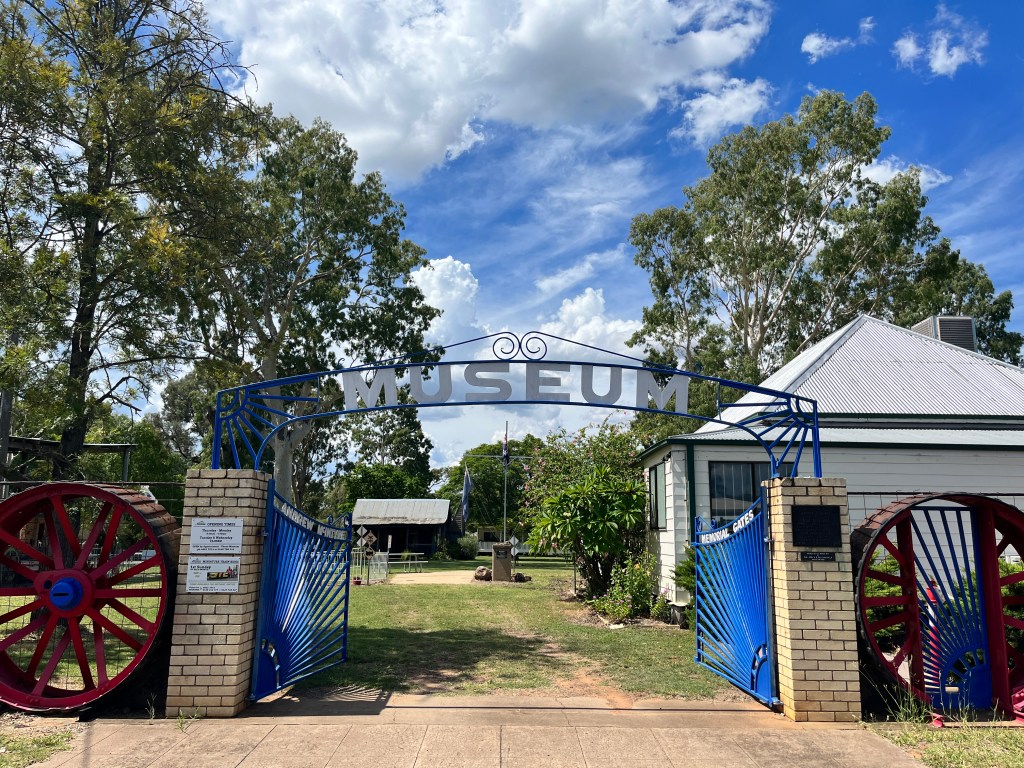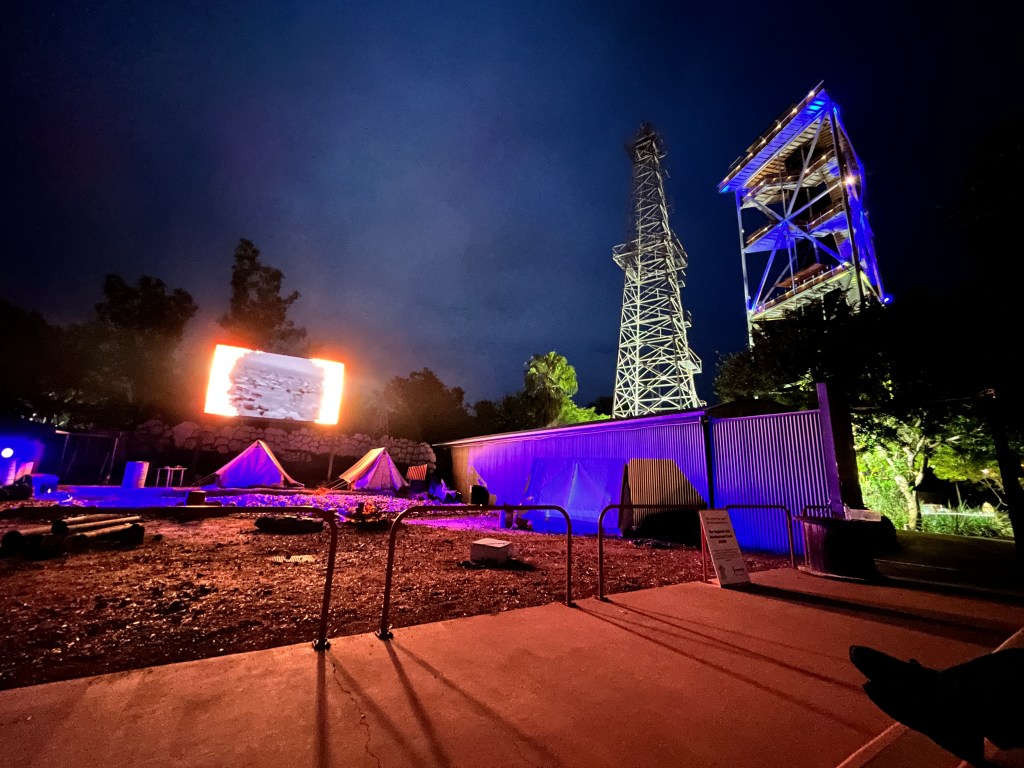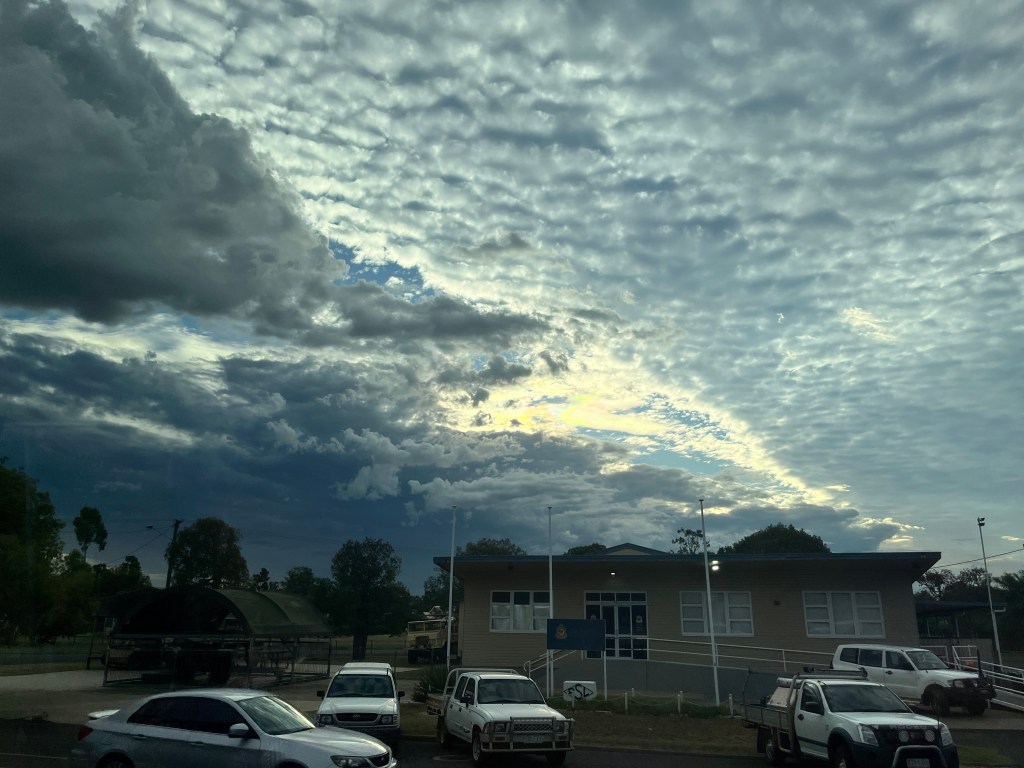Blog Archives
Merriment in Maranoa
I recently made a trek out to Maranoa to present a Collection Managment Workshop as a part of the Capture, Connect, Curate Workshop Series, hosted by Maranoa Regional Council in partnership with Southern Queensland Regional Arts Networking services (RASN), and Museums and Galleries Queensland (M&G QLD).
On my journey west, I stopped to visit Chinchilla Museum where I was astounded by the healthy number of volunteers that gather there on a Thursday (I counted 25!). I was fortunate to have arrived during lunch where I was invited to join them and their delicious sandwiches. Chinchilla is rich in local stories; however, it was their connection with prickly pear which spiked my interest.
In the early 1920s, Chinchilla housed the Cactoblastis cactorum (aptly named) moth inside their Chinchilla Prickly Pear Experimental Station. Here the moths underwent strict breeding and feeding assessments to ensure they would only attack their target – the prickly pear, and in 1926 the first moth was released. Today it is still regarded as one of the world’s most spectacular examples of biological weed control.
Before their release, prickly pear had overtaken 60 million acres (24.3 million hectares) of land in New South Wales and Queensland, making it unusable. By 1933 it was estimated that 80 per cent of the infested land in Queensland, and 50–60 per cent in New South Wales, had been cleared.

Along with this mural, Chinchilla Museum (pictured below) also provide a short film about the history of Prickly Pear in the region. Highly recommend you stop for a look if you’re in the area.

The next morning it was off to Roma to kick off the first day of the workshop series. Day one had us travelling to the Injune Memorial Hall to hear presentations from RASN and M&G QLD regarding grant writing.
Day two was hosted inside the Roma Cultural Centre where I began the day with my Collection Management Workshop.

The participants included members from the Roma Butter Factory, Cultural Heritage Injune Preservation Society, Surat Museum, Chinchilla Museum, Maranoa Council, and even one all the way from the Lockyer Valley Regional Council! All of the participants were engaging and offered fabulous examples and stories to really bring the topics to life – thank you to the wonderful participants!

Saturday afternoon was an engaging presentation by Mark Creyton on Volunteer Recruitment, followed by a networking event held at the Big Rig. Starting with a ride up the Big Rig itself, the networking event began with breathtaking views of the Maranoa Region.

Once dark, we then had the riveting opportunity to view The Big Rig Express Night Show, a 35-minute light show unravelling the history of oil and gas in Roma.

With the clever use of light to create silhouettes of the devoted Australian riggers on the display tents, pressurised water to convey the spilling of oil, and even fire to emphasis the drama of it all – it was a thrilling retelling to say the least.

Not to mention the spectacular infrastructure surrounding it.
Thank you to the Maranoa Regional Council, Southern Queensland Regional Arts Networking services, and Museums and Galleries Queensland for organising such a wonderful event.
Of course, a trip out west wouldn’t be complete without a stunning skyscape – until next time!


